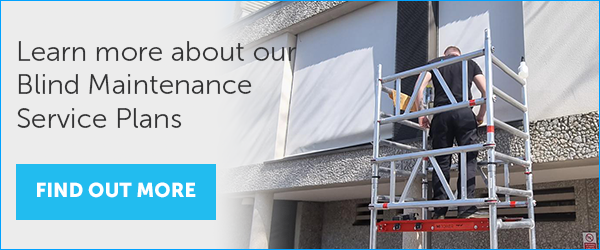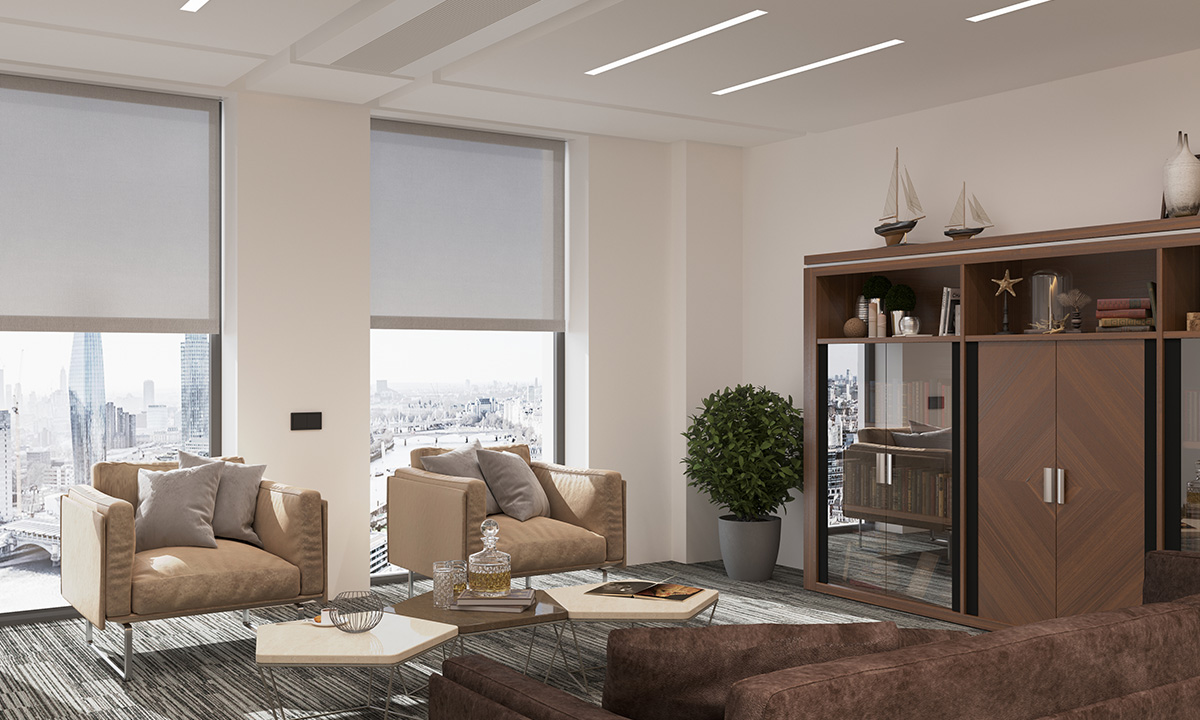Powered blinds come in many different configurations and designs, each with its own advantages, and it's important to find which type of blind works best for your building's needs.
Firstly you need to consider how you need to be able to control your powered blinds. This may depend on the number of blinds under control, where they are located, how they are used, and whether they will be part of a Building Management System (BMS). Controls provide a great deal of versatility to your blinds as they can be used to control blinds individually, in groups, or both, and can include stop presets
There are several types of controls to choose from;
Local controls - Typically situated next to the blind itself, or on a panel in the room, local controls allow you to raise and lower blinds as easily as switching a light on or off.
Master controls - Whether you use a BMS or not, master controls let you manage the operation of powered blinds from a central location.
Automatically controlled blinds - The most versatile options, blinds that are controlled by external sensors can be set to react to changes in light, heat and time - managed by individual sensors or through your BMS. Blinds can be interfaced with building lighting or heating and cooling systems to become a dynamic solution and be a part of effective energy saving.
Secondly, you need to consider the type of motor your powered blinds use. Picking the right motor type depends on how the powered blind will be used, and what infrastructure or fittings that may already be available.
- Hard-wired motors are the most dependable and best suited for large amounts of blinds, but it’s not always possible to install wiring everywhere. There is a range of alternative options that can be considered, for example, wireless motors are ideal for smaller amounts of blinds (ideally under 20) as they only require a mains connection, and are operated using radio control. However, large numbers of wireless motors may result in radio interference and unreliable operation.
- Digital control motors can give feedback to your Building Management System, allowing the BMS to tell whether your blinds are open, closed, or partly open, and enables them to be perfectly synchronised. Feedback from powered blinds can also be examined for signs of wear or nascent faults, alerting you to issues before they become expensive problems.
- Obstacle detection motors are an efficient way to prevent damage to your blinds, particularly in hotels where furniture may be close to the window or guests may leave possessions on the windowsill. Unlike other types of motors which will continue to travel if obstructed, they are able to detect any unusual strain and will automatically stop when resistance is felt.
- Auto-align motors are a great way to ensure all your blinds are in the same position, the motors give feedback to and electronically match travel on adjacent blinds.
Finally, blinds that are operated periodically can move quite slowly, but powered blinds over the windows in a meeting space may need to be raised and lowered many times a day and a slow powered blind will leave people waiting impatiently. It is important to choose the right motor that will cope with the predicted duty cycle, and that will operate at a useful speed when needed.
There are many other things to consider when choosing powered blinds like motor noise or aesthetics, but these are the principal factors you need to bear in mind when making your choice.
As the UK's leading specialist for complete blinds maintenance for workplaces, we know firsthand that figuring out what your workplace needs isn’t always straightforward - but is an integral decision for clients and employee comfort. This is why Labetts works with clients to find which options best suit your blinds and solar shading needs.


